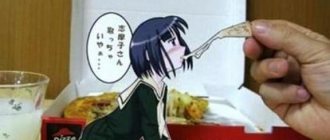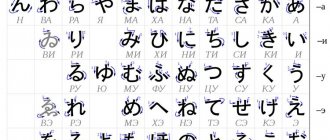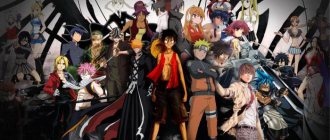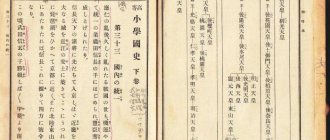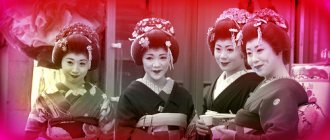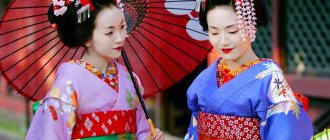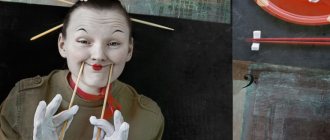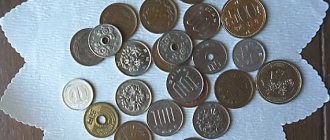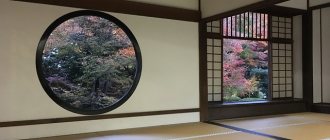Features of Japanese mythology
Japan is a country of contrasts. Modern technologies for which the state is famous do not go against long-standing traditions. Legends are an integral part of this culture. Mythical creatures that “came from the sunrise” have incredible power and can create entire worlds if that is their true goal. Each belief has its own character - it expresses a certain feeling. The authors express their main idea through characters. Each hero is a metaphor for lived experience: the concept of karma and working off debts during life is often found in legends.
The mythology of Japan is also famous for its absurd creatures. They do not always represent power, and their abilities may seem insignificant. But they are important because they show part of a person’s character.
Each character serves as a prototype: some heroes were previously human, while others completely renounced everything that is human. The result is an entire fictional Universe where creatures can interact with each other or enslave souls.
Legends and beliefs
Mythology is entirely based on legends. These are stories that reach modern people - they contain a lot of fiction, some real facts and guesses. Legends are based on fears that arose in certain eras. When people were afraid of the unknown, they invented creatures that could take responsibility for troubles. Gradually the legends became more colorful thanks to various details. The modern fantasy genre is based on them.
Even now, creatures invented and taken from old stories are acquiring new skills. They, like humans, evolve. The transformations did not affect all stories - there are legends in Japan that are revered and retold from one generation to another. They are important as a cultural heritage and as a reflection of the era of their creation. They have nothing to do with real facts, but Japanese people of all ages sincerely believe in them.
Magical characters of Japanese culture
Creatures in Japanese culture are distinguished by their bright appearance. They are more sophisticated than Westerners and are endowed with charisma. Even negative characters are attractive. They have a special charm, thanks to which you don’t always want to blame or destroy them. Each story has its main characters and supporting characters. The latter can also have powers.
The list of eastern mystical creatures includes:
- male and female characters;
- positive and negative heroes;
- antagonists with changes in internal motives;
- monsters born by the forces of nature, they came to this world with a mission and steadily follow it.
Antagonists can serve as protection for good forces. A distinctive feature of such heroes is that they always have a clear reasoning for their actions. They cannot be simply negative or positive.
Female characters
Female characters have additional abilities. The choice of their gender is not random. They can seduce, fascinate and even paralyze with their beauty. Female antagonists are used to intensify passions - even without being human, the heroes experience certain feelings. Women's nature is changeable and difficult to understand.
Famous characters with characteristic female traits:
- Bakeneko. The prototype of the creature is a cat. She is just as cunning, dexterous and quickly adapts to her environment. He is both a werewolf and an animal with magical powers. They become a Bakeneko cat under several conditions. She must reach a certain age and grow more than 1 m in height. A mandatory attribute of the Bakeneko is a long tail. The older the werewolf, the more his tail forks. Male prototypes for the character are not used: the soul of the cat is female, just as cunning and dual. The abilities of the creature of Japanese folklore are ambiguous - the animal can shoot fireballs and walk only on its hind legs. A werewolf is dangerous to those owners who offend him. He can eat a person and transform into him.
- Yorogumo. Another animal that belongs to female mythical characters looks like a spirit with spider legs. Lives in the forest in an abandoned hut. The creature plays the lute - this is how it attracts future victims. It lures them in and then devours their souls. While a person is listening to music, he cannot move - all this time a cobweb is swirling around him. Yorogumo provides food for itself and its offspring. Other legends describe the female character as a temptress. She is looking for a valiant samurai and asks him to marry her. More often she takes on the image of a young, naive girl with a small child.
- Kitsune. The werewolf fox is in most cases a negative character. She looks like an elf and a vampire. Enchanting and unforgettable - according to legend, everyone who sees it is captivated by its beauty. Kitsune acts as a messenger of higher powers and a misfortune that came as payment for old sins. The creature walks accompanied by two snow-white foxes.
Kitsune
Any female character has an attractive appearance - this is how they attract the victim or the right person. They are multifaceted: the heroine cannot be viewed as an antagonist or a good fairy. For any good from a female being there will be a price.
Male characters
Male creatures are often found, but more in the form of monsters. They are assigned such character qualities as willpower, perseverance, and courage. Prototypes make good negative heroes. They can make decisions, follow their goals and are not swayed by emotions. Monsters that punish guilty people often have male souls. They are inexorable: no matter how the sinner asks for forgiveness, he will not be able to avoid retribution.
Mythical and fairy-tale creatures of Japan
Have you been to the Library lately?
And I highly recommend it to you! And the proof of this is the words of my fellow artist, Alena Basneva. I experienced the same emotions and I couldn’t say it better ;)
“Leninka. Library halls and green lamps. The department of oriental literature is opposite, on Mokhovaya, 6. The smell of books, shelves with catalogs. I came in the first row, and unexpectedly attracted the attention of wonderful librarians - the sweetest intelligent ladies showed ancient Chinese books from the century before and last century, on double-thin rice paper with seals and calligraphic notes in the margins. History volumes and manga, each book has its own secrets.
Oh, these fairy tales, oh, these storytellers. The Japanese have a special view of fairy-tale characters. Their fairy tales are really frightening, they see the position of man in nature differently, supernatural entities can be contained in any object or stone. There are national fairy tales that every Japanese knows, there are regional ones, when the frog from Hokkaido is different from the frog from Osaka, there are completely local ones, from villages or temples. There are as many readings and ideas about the characters as there are people. What we know is a nine-tailed fox-temptress kitsune, a tanuki raccoon flying on a scrotum, water-kappas. The theme of the exhibition was mythological creatures, and we drew how we imagined them from descriptions in books and online publications.
Oh, I cut a new personalized seal for the exhibition, without bothering with translating my name into non-native languages) but in ligature. It was most clearly placed with a fishing mouthguard.
An exhibition in the library is a special pleasure. With our works on stands there are books with Japanese illustrations. Hokusai - The Great Wave in Karagawa, which came to us at Pushkinsky, is represented in the manga by the brave warrior Hiran no Hosho, fighting a giant spider. Pay attention to the signature. Special thanks to the organizers for the warm, “lamp-like” thoughtful accommodation. Stands and display cases gave the exhibition three-dimensionality and connected geography and time.
The exhibition is open until the 20th, come to the beautiful old mansion near the Kremlin walls and plunge into the indescribably fabulous atmosphere of the Library.”
“Mythical and fairy-tale creatures of Japan” is waiting for you until October 20 in the Department of Oriental Literature of the Central District Hospital (Mokhovaya, 6-8).
Each of us has a child in us and we are all waiting for a miracle! Come for a miracle and let your fantasy play out inside you and nothing will hold it back;)
Demon Akashita
The demon Akashita has a very terrifying appearance. He is angry, and his fingers are covered with deadly claws. The monster's face is not visible. Black hair, soaked in the blood of the demon's victims, hangs over it. Most of the monster is hidden under a cloud of smoke that appears at night before the demon arrives. Amanojaku is a demon in Japanese folklore that draws out a person’s most hidden and sinful desires. He commands vices, and allows a man or woman to completely succumb to them.
Water creature Kappa
Kappa is a kind of reincarnation of a water spirit. He is endowed with a special appearance and lives only under water.
How to recognize Capa:
- it has large gills running all over its neck;
- skin color green, sometimes dark green;
- fingers with claws are connected by membranes;
- there is no mouth on the face, but instead there is something like a beak;
- green or emerald eyes;
- The head of the merman is covered with fur.
Externally, the character resembles a mixture of a frog and a turtle. Some legends give the animal a dense shell that can withstand any attack. There are patches all over the body that glisten in the sun. The merman smells like rotten fish - even before meeting him you can smell the unpleasant odor emanating from the water.
Supernatural powers are concentrated at the top of the animal's head - in that place the animal has something like a saucer. Outside of water, Kappa quickly loses his strength and becomes weaker, so he only gets out of a body of water when necessary.
Other beliefs describe the character as resembling a monkey. The hairy creature loves vegetables, fish, and fruits. If you catch him, you can make any wish, and it will definitely come true.
Mythical deities, animals in Japan
➜ ᎒
